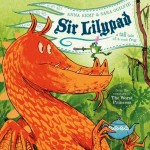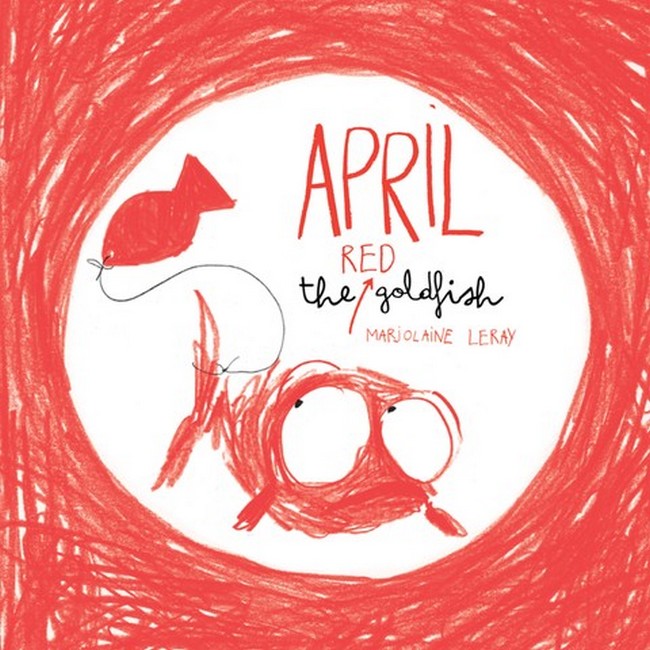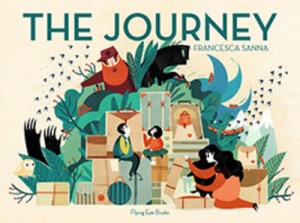 The Journey
The Journey
Francesca Sanna
(Flying Eye Books)
The Journey explores the very current and heart-wrenching theme of people fleeing their war-torn home in a way that is pitched perfectly at the intended audience. Using traditional fairy-tale imagery (folksy artwork, dark forests, ogre-like figures etc), Sanna creates a narrative which deals with a powerful theme while retaining a story-like atmosphere. This creates the perfect premise to spark important but safe conversations about what is going on in the world. As it is narrated by one of the children, there is a certain innocence to the way the trip is perceived which is very powerful and often quite heartbreaking. The narrator saying that his mother is never scared and the accompanying illustration telling a very different story is particularly poignant. The use of perspective is also striking, often showing the children and their mother as really small against the obstacles they face; this really helps young readers grasp quite how dangerous and risky deciding to leave one’s country is. While the story does not offer a happy resolution, it does offer hope, encouraging further conversation. By telling the story of migrants through the eyes of a child, The Journey offers a compassionate outlook on the refugee crisis, and is much needed for children to understand the human cost of this ongoing tragedy.
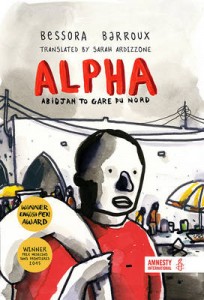 Alpha
Alpha
Barroux (artwork) & Bessora (text), translated by Sarah Ardizzone
(The Bucket List)
Alpha tells a very different story from The Journey as to what it is to be an illegal immigrant desperate to reach Europe. Aimed at a much older readership, the story follows Alpha on his quest to reach Paris all the way from Cote d’Ivoire, in the hope of being reunited with his wife and son who undertook the journey months before him. The road to freedom is paved with tragedy, violence and constant fears, but also unlikely alliances and friendships. The artwork is dark and sketchy, using bold black lines with the occasional colours , all done in felt tip pen and wash, a deliberate choice from Barroux, as these are materials Alpha could have access to. The format is very interesting, almost a hybrid between graphic novel and illustrated fiction. There are no speech bubbles typical of the graphic novel format, but Barroux uses panels throughout, with the story told in the first person by Alpha in short paragraphs underneath each of them. It helps with the flow of the story. Some of the artwork is haunting, as is the story being told of course. Alpha’s story is symbolic of the millions attempting a similar journey each year and of a crisis that will define our time. His resigned tone throughout the narrative is powerful and fits with an ending that will leave readers even more dismayed by this humanitarian tragedy. A must read, but definitely better suited for secondary school age.
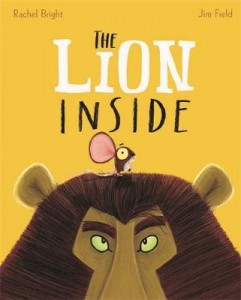 The Lion Inside
The Lion Inside
Jim Field (artwork) & Rachel Bright (text)
(Orchard Books)
It is not easy being little and never noticed, even ignored and walked all over. Why can’t Mouse be a bit more like Lion? He certainly knows how to makes sure every one knows quite how important he is. Then Mouse has a brainwave: all he needs is a roar in order to be noticed, and there is only one person that can help with that …
The fun rhyming text from Rachel Bright is teamed up well with Jim Field’s joyous vibrant artwork. His anthropomorphic animals are always so expressive and Mouse has the most forlorn look in its eyes you are likely to come across in a picturebook and the most adorable oversized ears. Size is key in the story and this is conveyed so cleverly in the artwork. Field’s work on perspective and viewpoint is really skillful and really helps draw the reader into the story. A perfect story for preschool children, and a wonderful tale to be read at bedtime.
 Greenling
Greenling
Levi Pinfold
(Templar Books)
Levi Pinfold is back with a sumptuously-illustrated ecological tale about Nature regaining what is its own. When Mister Barleycorn finds a green baby on the land of their remote Australian farm, he takes him in, much to his wife’s disgust at first. But Greenling’s appearance also marks a rebirth of Nature – fruit, vegetable and flowers grow everywhere, inside and outside. At first feared by everyone, Greenling is eventually accepted as people learn to understand and embrace him and the effect he has on their surroundings. With stunning paintings adorning the pages throughout, this unusual tale is an allegorical celebration of the beauty of Nature, and a gentle warning about making sure we do not reject its power, beauty and rightful place in the world. Pinfold’s work is intricately detailed, and it can be dark and surreal at times. But there are plenty of references to Australian flora and fauna for little readers to notice; it may take several readings to realise they are there, but that is the joy of introducing children to more complex artwork and narrative. Greenling not only reads as a celebration of Nature, it also reads as a celebration of Australia, with some stunning landscapes, which are facilitated by the horizontal shape of the book, allowing for long double-spreads. Quirky, but fascinating.
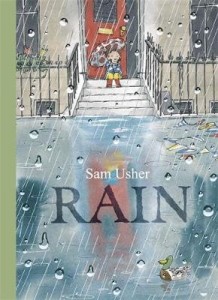 Rain
Rain
Sam Usher
(Templar Books)
It is with great delight that readers will welcome back the little boy and his grandpa we have met in Snow, and from looking at the cover alone, with its beads of rain water giving the reader the impression he is looking at the boy from a window across the road, you just know you are in for a treat. It does not disappoint. The boy’s eager plans to go and play in the puddles are being thwarted by his Grandad’s need to write an important letter. When they finally go outside to post it, there is fun at every corner awaiting them. While Snow allowed Usher to be playful with negative space, Rain allows him to create superb artwork focusing on the reflections in water, using watercolour. The artwork is accomplished and utterly magical, using mainly primary colours and repetitive patterns. Gentle, comforting and full of quiet happiness, Rain celebrates the fact that the best things are worth waiting for. Eagle-eyed little readers will notice many items found inside the house are repeated in the outside scenes, celebrating the power of imaginative play which finds its culmination in the beautiful Venice-inspired penultimate spread. The special relationship between grandfather and grandson will warm your heart just like the mug of hot chocolate they savour at the end, and I simply cannot wait for the next installment, Sun, due out in June.
—
Source: review copies apart from Alpha (library copy) and The Lion Inside (blogger’s own)



